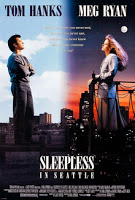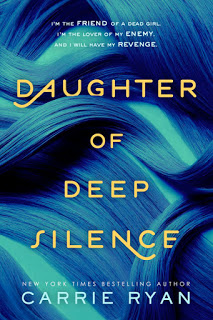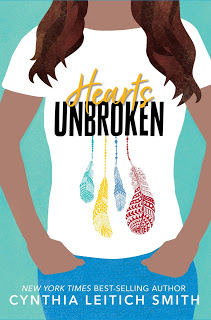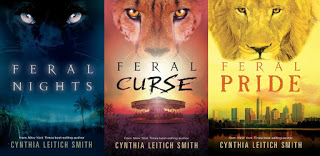Questions to Think About When Reading Hearts Unbroken
By Cynthia Leitich Smith
The quaternary in a series of four posts celebrating the Oct. nine release of my realistic contemporary YA novel, Hearts Unbroken (Candlewick). Spoiler alert.
Permit'due south talk nearly teen dearest, romance, passion!
Which of course ways talking nearly awkwardness, three-dimensionality, and emotional resonance.
My new YA novel, Hearts Unbroken (Candlewick, 2018), is partly a dear story about two characters, Louise Wolfe and Joey Kairouz, who offset connect every bit staff members of their high school paper.
The story is very loosely inspired by my own lived adolescent experiences. But, big picture, nosotros're talking direct-up fiction. Romantic fiction, though not genre romance per se.
Don't become me wrong. I admire genre romance. I spent a yr reading more than 300 genre romance novels in large part to study how the authors synthetic central plots – middles, especially reversals. Nobody navigates reversals better than a genre romance novelist.
That said, while I've written YA novels with strong romantic elements, the main page-turning question isn't: How will the romantic leads gather?
Sure, that plotline may hook certain readers. But some teens may be more interested in finding out who is behind the harassment of IPOC kids bandage in the school musical, "The Wizard of Oz." Some may wonder whether the protagonist's niggling brother Hughie ever gets his moment in the spotlight. And I suspect many YA readers will exist watching how my Native hero navigates daily life in a middle class suburban setting—both Indigenous readers who run across themselves (to varying degrees) reflected and non-Indians newly because that perspective through a first-person lens.
Regardless, my first affiliate opens with a romantic disharmonize and the last affiliate ends with an optimistic romantic reconciliation—form-wise, that'due south pretty much textbook romance. Except that the protagonist has changed partners for the better.
Granted, early readers accept categorized the novel every bit a "gender empowerment" or "culturally-driven" or fifty-fifty an "important" story. It takes on big themes like creative speech and freedom of the printing. Only honey stories tin can do all that. It'due south all in how they're framed.
Let's reverberate on writing romantic elements. Did every i of these considerations factor into Hearts Unbroken? No, only I'thou a WCYA writing instructor and a big laic in the conversation of craft. Your manuscript may benefit from a strategy that didn't apply to mine.
Does Your YA Novel Need Romance?
Not necessarily. If you are writing a YA mystery or fantastical quest or contemporary realism rooted in, say, family dynamics or a best friendship, delight do not feel pressure to sprinkle, thread or shoehorn in romantic love. "YA lit" does not per se equal "romance."
Honor what the individualstory demands rather than compromising it to fit any misconception of market expectations. I personally would beloved to see more platonic friendship stories.
But if romance is right for your story….
Is It Honey at First Sight?
Beloved at first sight besides is known past breezy critics every bit "instalove" and/or "instalust." It's sometimes dismissed as a trope, past folks who equate tropes with trite rather than tradition.
My theory is this: All storytelling builds on all previous storytelling. You tin pull apart any story and trace the origins of its various components to previous stories. And a lot of them.

What matters is not whether honey at start sight has been done before (or has been done frequently) simply rather what yous do with it and why.
Consider, for example, "Sleepless in Seattle," a 1993 film, written by Nora Ephron. In the storyline, she introduces the idea of love at kickoff touch.
Tom Hanks'due south grapheme Sam Bloom says that, taking the hand of a woman to help her out of a car, he knew they were destined to be together. He calls it "magic."
This concept, which is analogous to dear at start sight, is reinforced throughout the story. The motion picture concludes with Sam Blossom and Annie Reed, played by Meg Ryan, leaving the top of the Empire Land Building, holding easily. Showtime bear on. Presumably happily e'er after.
Granted, the audition is given sympathetic (in Sam's case) and endearing (in Annie'southward) glimpses into the daily lives of the romantic leads. We're nudged to root for their destined connection.
Why does that work? Considering the protagonist is Sam's young son, Jonah (played by Ross Malinger), who'due south been striving to bring his dad and Annie together. Jonah'due south quest is to notice a new wife for his widowed male parent and a new mom for himself. Jonah has driven the story arc and achieved his goal. We believe in his happy ending.
The pesky details of the grownups' romantic dynamic are, at best, fodder for a sequel, though I wouldn't have recommended one and Ephron chose not to write it.
"Love Takes Fourth dimension" or Does It?
Since we're already drawing on the popular-culture models of the 1990s, let's consider the 1990 Mariah Carey song "Love Takes Time." She's singing well-nigh the end of a relationship, healing a cleaved heart, but she could just as easily exist talking about the beginning.
A slow-building, romantic relationship betwixt two characters gives readers more of a chance to invest, to get to know each of leads as individuals earlier buying into the idea of the couple.
This is the approach I took with Louise and Joey. Although she'southward the kickoff-person protagonist, he gets several chapters of shared screen fourth dimension before bold the mantle of love interest.
Yes, there's an initial attraction, merely information technology'southward at various points stalled or batty by ghosts of by relationships, family drama and trauma, the idiosyncratic foils inherent in daily life also as the characters' respective insecurities and competeing interests.
What'southward with All the Love Triangles?

The most mutual love triangles in YA literature involve ii cis male person characters and a cis female person character.
Every bit Carrie Ryan points out, "…a love triangle done right isn't about a female character'southward angel bouncing back and along between two men, it'southward about her internal struggle within herself as she figures out who she wants to exist and what's of import to her."
Most of the criticism of dear triangles (and the typical less-than-compelling example of them) is rooted in a traditionally-gendered power dynamic.This concern comes from a long history of story in which girls and women are portrayed as prizes rather than people.
The fundamental to transcending all that is to take Carrie'south advice and requite the protagonist agency and three-dimensionality.
(In the eight years since Carrie's post, the YA literature has begun opening up more to include a wider diversity of characters. We can extend her analysis of existing stories to apply to dear triangles involving characters of all genders and orientations. That said, nosotros need much more representation of terrific YA beloved stories reflecting the LGBTQIAP+ customs.)
What Do They See in Each Other? As well Looks.
I'm not suggesting that physical attributes are totally irrelevant to your writing. Describing them tin can help spring-showtime the reader'southward theater of the mind. Depending on the conventionality of a given character'south attractiveness, nosotros tin frequently begin to extrapolate how the world responds to them, which in plough will bear upon their experiences and perspectives.
Moreover, a brushstroke or two detailing appearance—build, coloring, makeup, dress—tin contribute to conveying a character'southward personality, culture, heritage, race, etc.
Only unless your story arc is centered on a character'south superficiality or bowing to peer expectations, only categorizing a potential love interest equally "hot" and and so piling on the physical clarification isn't likely to engage the reader's center.
In Hearts Unbroken, Louise is attracted to Joey's raw energy, his focus on his photography and videography, his sense of humor, their shared rapport, and his devotion to his pet hedgehog. She empathizes with his marginalized identity, his struggle over his parents' contempo divorce, the fact that his ex-girlfriend cheated on him and that he's the new kid in schoolhouse. Does she discover him physically attractive? Certain, but there's more than to information technology than that.
Are They Irresistibly Imperfect?
In the immortal words of Lady Gaga, "I love imperfections."
The argument could exist made that loving someone's flaws proves the love is real. Nosotros empathize, for improve and worse, who someone is and we honey them anyway.
Consider "Bridget Jones'southward Diary" (2001). Afterwards a series of interpersonal misfires, in a pivotal scene, stuffy Marker Darcy lists Bridget'south endearing "faults" and and so firmly declares that he likes her, just the way she is. At that place'due south power in that. Staying power.
How Far Will They Become?
From property hands to full-on sexy-fun fourth dimension, there'south a broad range in the sensual and sexual nature of literary teen romances.
You lot tin can look at writing those scenes equally a thing of conscience or a matter of craft.
We'll consider both.
The primal is to stay specific. What rings truthful to these detail characters, their relationship arc, situation and setting? (The more generic your scene is, the more probable it is to read clichéd and autumn apartment.) Frame the characters as circuitous people, not stereotypes rooted in gender or orientation.
Spotter out for your ain biases, avert double standards, and exist wary of judgmental-ness.
Consider the moral center. How volition you frame the dynamic around consent—be it for a kiss on the lips or somewhere more intimate? Will faith-based beliefs play a function in conclusion making?
On a applied level, how will the text address the questions of nascence control and protection from sexually-transmitted diseases?
How will the awkwardness manifest itself? Because awkwardness is a given. You're working with inexperienced characters impacted by personal stakes. Weigh each participant's emotional maturity.
How About the Whole Center?

Aye, love matters…equally does romance…as practice tender touches…as does sexy fun. For many teens, these are rites of passage, partially defining experiences. And for many, they're not. That may be a thing of timing and/or orientation.
According to a CDC survey, the per centum of high-school students who say they've had sex has declined from 47.8% in 2007 to 39.five% in 2017. Simply those YA readers who don't engage "all the fashion" may still experience desire and/or kissing and/or petting and/or be otherwise socially or emotionally affected by their peers' sexual relationships and related expectations.
At the same time, sexual activity is only ane aspect of life and, again, it's not for everyone. If you're writing a love story, that overarching romantic arc probably can't sustain the entire book all by itself.
You should probably ask yourself:
- What else is going on?
- What'due south happening with your protagonist'south and love interest's family, friends, community?
- What'south happening within their heart that'due south not nigh their significant other?
- How do they experience about themselves?
Happily E'er Subsequently?
Consider the possibility that one'south get-go dearest commonly isn't one's last.
YA writers, I'm looking at you. And in the mirror, likewise.
I fret that in our quest to frame the highest possible stakes we've massively oversold start-love, wish-fulfillment stories to the betoken that teens have gotten the message that they should stay in relationships well past their expiration date.
Fifty-fifty in cases where there are abusive or other unhealthy dynamics in play.
What'due south more, in that location's something more than layered and compelling well-nigh risking one's heart after having to first mend information technology.
 Here's to more than stories of second loves (and beyond) in YA literature.
Here's to more than stories of second loves (and beyond) in YA literature.
Are You a Romantic?
Yep or no, I hope these questions and reflections assistance you craft that novel.
In "Josh Has No Idea Where I Am!" from season ane of "Crazy Ex-Girlfriend," Rebecca'due south therapist, Medico Akopian, says to her that cracking, defining beloved tin exist a passion rather than a person.
As for me, I often think that writing is the great love of my life.
Cynsational Notes
★ "Absorbing….Blending teen romance with circuitous questions of identity, equality, and censorship, this is an first-class choice…"
— School Library Periodical, starred review (see also Teen Librarian Toolbox: "a must-have for all collections.") (see too Teen Librarian Toolbox: "a must-have for all collections.")
"Highly recommended! In that location's so much love and warmth and reality all through Hearts Unbroken. And and so much hope! And some absolutely terrific ground-breaking moves!" — Debbie Reese at American Indians in Children's Literature (read the whole review)
Q&A with Cynthia Leitich Smith from Book Q&Every bit with Deborah Kalb. Peek: "The fourth dimension wasn't right for a story then unabashedly Native in politic or sensibility, and I wasn't fix emotionally to write it even so either."

Interview: Cynthia Leitich Smith past Crystal from Rich In Color. Peek: "As I drafted scenes, I was aware of exactly how they'd resonate with many Native teens and, to varying degrees, amerce many influential, non-Indian adults. I kept typing anyhow."
The Middle of Cynthia Leitich Smith by Amanda West Lewis from Wild Things: VCFA MFA in Writing for Children and Immature Adults Blog. Peek: "I crafted a love story juxtaposed confronting microaggressions and their escalation. A story that's infused with humor and community and lived experience as a centre class Native teen."
Let'south Indigenize Our Bookshelves and Fully Welcome Native Kids as Readers by Cynthia Leitich Smith from Nerdy Volume Gild. Peek: "I understood from a very young age that the Native office of myself didn't seem to belong in the world of readers. (Did we ship that message to all Native kids? Practise nosotros nonetheless? At what cost to them and to their non-Indian friends…)."

In add-on to the release of Hearts Unbroken, Cynthia is celebrating the new paperback edition of Feral Pride, the third book in the Feral trilogy and the final volume set in the Tantalize series and Feral serial universe.
Source: https://cynthialeitichsmith.com/2018/10/hearts-unbroken-writing-teen-love/
0 Response to "Questions to Think About When Reading Hearts Unbroken"
Post a Comment